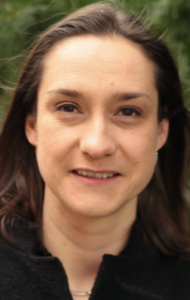Janet Anders
University of Exeter/Potsdam University
ZOOM LINK TO JOIN IN: http://s.ic.fo/QTD_OpenQSystems211020
Wednesday Oct 21, 2020 / 20:00-20:30 CEST
Deriving a generalised Landau-Lifschitz-Gilbert equation from a system+bath Hamiltonian
Magnetic materials are commonly analysed using the Landau–Lifshitz–Gilbert (LLG) equation. Despite wide use this equation contains a phenomenological damping term that remains poorly understood and extensions beyond the LLG equation have been plagued with having to put the fluctuation-dissipation-relation (FDR) in by hand. I will discuss how the a system+bath Hamiltonian, similar to the Caldeira-Leggett and spin-boson models, can be used to derive a general spin dynamics equation that automatically fulfills the FDR, and show that the new equation reduces to the standard LLG equation for Ohmic coupling.
I will demonstrate how resonant Lorentzian couplings can be used as a tool for the systematic comparison of spin dynamics in LLG-like and non-LLG-like regimes, and present numerical results showing their magnetisation dynamics and steady state. We find much quicker decay to steady state for couplings that invoke memory effects, and quantum flattening of the magnetization curve of a single classical spin at low temperatures. The presented model provides a powerful tool to explore general three-dimensional rotation and dissipation in quantum and classical thermodynamics.
[1] arxiv 2009.00600v1 (2020), Versatile three-dimensional quantum spin dynamics equation with guaranteed fluctuation-dissipation link, J. Anders, C.R.J. Sait, S.A.R. Horsley.


Hi Janet,
this is a really beautiful project!!! 🙂 I have three comments/questions:
(1) I was not really getting, why you called it “beyond Caldeira-Leggett”. Your bath and system-bath interaction was precisely of Caldeira-Leggett form. So what is the Caldeira-Leggett model in your understanding?
(2) This is basically a repetition of Mark’s question. What is the physical nature of your bath? (sorry for the repetition)
(3) Because you asked for methods to get insights into the non-Markovian case. I want to point out that your “Lorentzian case” can be exactly treated with a reaction coordinate mapping. That is to say: Take your system plus a reaction coordinate and an Ohmic (= Markovian) harmonic oscillator background bath. This will give you exactly (!) the same dynamics as what you simulated with your memory-kernel-equation. Maybe this insight helps you to understand what is going on in the non-Markovian case. In particular, it will allow you to easily look at the Hamiltonian of mean force and related questions… 🙂
Yes the system bath interaction is like the Caldeira-Leggett model – expect i) it’s a spin, not an oscillator, ii) it’s coupling to three continuous baths making it rotate contrasting with the linear motion described in CL.
[A minor difference to the standard CL is also the use of the continuous bath a la Huttner+Barnett instead of the common discrete bath, but that’s more of an issue of taste rather, not different physics.]
2) The bath is everything that interacts with the spins – apart from the spin-spin interaction themselves which must be explicitly modelled by the exchange term with the J to describe magnetic materials properly. So what’s left are: interactions with phonons and electrons. )Interactions with other spins, such as nuclear spins, will be much smaller in magnitude, and can most likely be disregarded.)
Btw, in the magnetism community people also talk about an electron temperature and a phonon temperature, which can be different if the material is excited by a pulse and the electrons and phonons respond on different timescales and exchange energy between each other. The resulting (effective) temperature of the electron and phonon “sub-baths” is then commonly described by a “two-temperature model”.
3) Ahhh – very interesting!!! We should talk about this!